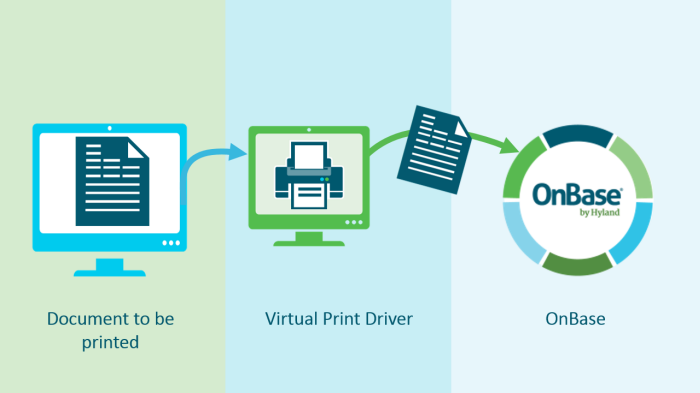Virtual Print Driver
Summary
The Virtual Print Driver appears as a standard printer in Windows applications and enables users to electronically print documents directly into OnBase. The printer can prompt for an import dialog or can save the documents into a network directory to be swept into a scan queue. Virtual Print Driver can eliminate the expensive practice of printing documents in order to scan them back into OnBase.
Benefits
- Replaces the redundant process of printing, scanning and shredding documents
- Prevents possible loss of sensitive documents
- Reduces cost of materials and labor
- Provides a more efficient process of document capture from other applications
- Easily deployable throughout the enterprise
- Creates instant integration, replacing costly integrations, without custom coding
Design

The Virtual Print Driver (VPD) is installed as a Windows printer, and renders images that are written to a spool directory. The printer can call an Import Dialog for indexing into OnBase (or documents can be swept from the directory in a batch). Images can also be sent to Disconnected Scanning or Front Office Scanning applications.
Applications
- No paper is produced. The Virtual Print Driver can automatically launch an import dialog directly into the an OnBase Client. Using the Virtual Print Driver reduces exposure of sensitive documents by ensuring that information is never printed onto paper. VPD is a standard Windows printer, so users only need to select the Virtual Print Driver as their default printer. It eliminates print, scan and shred scenarios.
- Users can print to a shared directory. That directory can be swept on a scheduled basis, and the documents will be archived in a batch where they can be indexed using the OnBase Document Imaging window or via the OnBase Web Client.
Interface

The Virtual Print Driver Listener (shown) can be used for upload, or the OnBase Client, Web Client, Disconnected Scanning or Front Office Scanning interfaces may be used to index the document.

